How to turn most any
alternator in an emergency welding machine
By: Scott
Fratcher - Marine Engineer/Captain
Scott Fratcher explains how to make an emergency welder
with a high-output alternator
It's possible to weld with nothing but an alternator driven by
a small engine, and although it's not recommended as a day-to-day
activity, it's useful in an emergency.
What if you were out at a remote island and broke a chain plate
or your windlass mount cracked? This type of thing happens all
the time with cruising boats.
Here's how it's done. Start with at least a 100amp alternator
(120amp is perfect - Delco's CS144 alternator is great for this
application).
You also need:
* A 110V 60W (or more) light bulb and socket;
* A few cables you can weld through (No. 4 or larger);
* A welding electrode (stinger);
* A small supply of 2.5mm welding rod (6013);
* A variable resister capable of passing four amps continuous.
It should be a rugged variable resister, at least 50mm across.
To use your alternator as a welder you have to attach the welding
cables to the back of the alternator. The ground lead is attached
to the negative pole of the alternator and the positive lead connects
to the welding electrode (or stinger as it's often called).
LIGHT ON
At the same time, wire the light bulb across the alternator's
positive and negative output leads. This is important as the light
will glow bright any time the welder is not burning a rod.
This light is what takes up the extra current and voltage when
the welding is stopped. When welding, the voltage drops to about
20V and the light goes out. It kind of works backward from what
you would expect. Light on at rest, light out while welding.
The variable resister is wired in line from the positive of a
battery, through the variable resister and into the positive field
brush, through the field and back to the negative of the battery.
The boat's original alternator regulator is completely disconnected
from the alternator.
The alternator should be a P-type (externally regulated). In
other words, one field brush should be grounded and the second
brush should need 12V positive to produce current (almost every
high-output alternator is wired as a P-type externally regulated).
When ready to weld, hook up the cables and light bulb as described
above, start the engine, turn off the battery switch connecting
the alternator to the battery*. Gently turn up the variable resister.
The light should begin to glow. Turn the light up bright, but
not maximum and get ready to weld.
That's all there is to it.
* Normally turning off the battery switch with engine running
would ruin the diodes of the alternator. This is because, while
the alternator is producing power, the stator or outside of the
alternator has an electrical field formed. When you disconnect
the load (battery), that electrical field has to go somewhere.
It looks for a path to ground. It finds the shortest path through
the diode, thus ruining it along the way. The light bulb run in
parallel with the welding leads prevents this disaster from happening
and gives the electrical field somewhere to go.
EMERGENCY TIPS
Tip 1: If you find yourself in an emergency and just need to
weld but don't have a variable resister, you can use a 12V light
bulb wired in place of the variable resister to power the field.
Put two bulbs in parallel or even three in parallel till you get
the right resistance to strike a welding arc. This is kind of
crude, but it will work in an emergency.
Tip 2: Don't try to back feed a battery switch as a simple method
of switching between battery charge and welding. The switch will
arc inside and weld itself together. I went through three battery
switches before I worked out why this happens.
Tip 3: Make sure you use a good 110V light bulb (you can't use
a 240V bulb) and a secure electrical connection to the alternator.
If the light becomes disconnected or the bulb burns up, the diodes
in the alternator will immediately fail. This is why it's important
to carry a spare set of alternator diodes (even better is a complete
spare alternator) if you're planning on using this “bush”
welding technique.
Tip- Copy this article and keep it with some spare welding rod
on the boat in the unlikely event it's ever needed.
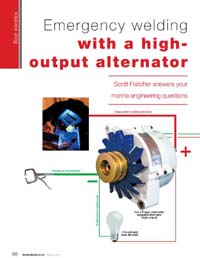

Using batteries linked in series as a welding source
Occasionally someone mentions welding with a set of batteries
linked in series as a welding power source. I highly discourage
this practice. Here is a response to a post explaining why.
Batteries vs alternator welder
Thank you for your comment. If I understand correctly you say
a better weld would be made in an emergency by linking batteries
than by using an alternator welder.
I disagree for three reasons.
1. The alternator welder mimics the open and closed voltage of
a stick welding machine very nicely. Open voltage is about 80v
and welding voltage is about 18v. Both are pretty close the open/closed
voltages of the old Lincoln transformer welders.
The open voltage allows easy arc starting because the 80 volts
wants to jump the gap and start an arc.
A battery pack is inferior to an alternator welder as the arc
starting voltage arc is lower thus starting an arc can be difficult.
2. With an alternator welder the current to the weld can be precisely
controlled through the alternator field. I have set the field
and welded with a steady 80 amps showing on an AC/DC clamp amp.
I have welded this way for hours and the amperage remained steady.
The stable amp flow allows the welder to lay a predictable and
thus stronger weld.
A battery is inferior to an alternator welder because a battery
does not have an easy and accurate way to control amps.
3. In a direct short of the welding leads the current potential
of the alternator is about 120 amps while a battery bank might
be capable of 800 amps. It is simply safer to work with a smaller
maximum potential as the possible ramifications are lessened.
For example in the event of a direct short with an alternator
welder the worst that may happen is the alternator overheats and
is ruined. A direct short in a battery can cause the battery itself
to explode with resultant blinding battery acid sprayed around
the work zone.
For these reasons, if faced with an emergency I'll try
welding with an alternator before a stack of batteries.
|
.jpg)
.JPG)
.jpg)
.jpg)
.JPG)
.JPG)
.JPG)
%20(Custom).jpg)
Basic Fast Flow Emergency Bilge Pump Kit
$599USD plus shipping
Order your books by Scott Fratcher here
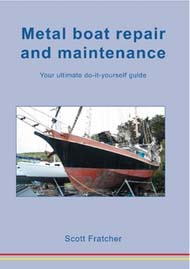
Metal boat repair and maintenance. A must read for any steel boat
owner.
Print:
$31.10
Download:
$12.00
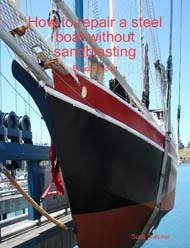
How to repair a steel boat without sandblasting. Special report.
Download:
$4.00
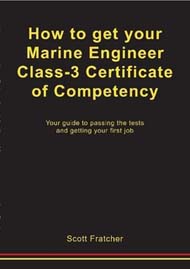
In order to get a good job as a marine engineer we need a marine
engineer licence, commonly called a Certificate of Competency
Print:
$39.49
Download:
$29.50

How to get a job on a mega yacht as a marine engineer? It can
be done without a licence.
Download:
$4.00
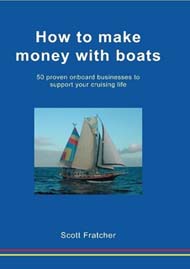
50 money making ideas run from a boat
Print:
$39.90
Download:
$39.90
Make money with boats? You bet! It's done every
day, but most people won't tell us how they did it. This book
is a tell all to give the layman the tools needed to start their
own onboard cruising business.
How to make money with boats has become an instant
classic selling around the world making dreams come true. If your
planning a cruise, or your know somone who is this is the perfect
book.
Print:
$39.90
Download:
$39.90

Print:
$21.37
Download:
$9.00
How to buy boats cheap? Dozens of tricks used
by adventurers around the world every day. This book is a must
read for anybody ready to purchase a boat.
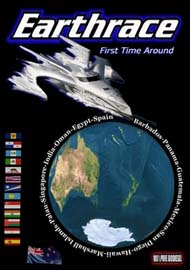
Print:
$29.96
Download:
$9.00
The race was a heartbreaker, but eventually Earthrace took the
round the world speedboat record. This book is the log and blog
of the 2007 race where Earthrace set dozens of fastest ocean record
crossings.

Download:
$12.00
Earthrace in color. The same book as above, but in vivid color
to bring all the race moments right to the reader.
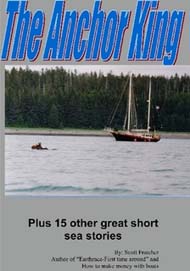
Print:
$14.97
Download:
$9.00
Anchor King is a narrative book of short stories of the Sausalito
California waterfront in the late 1980's. Anchor King contains
the award winning short story "Sex Toys?"
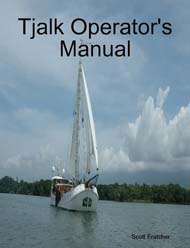
Print:
$115.47
Download:
$5.00
Tjalk Operator's Manual is an example of how
to build a yacht manual. Over 300 pages showing how to drive a
twin engine, single rudder vessel and much more.

|

